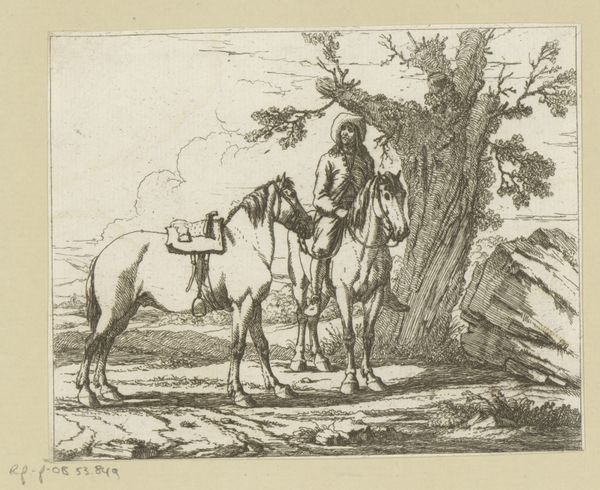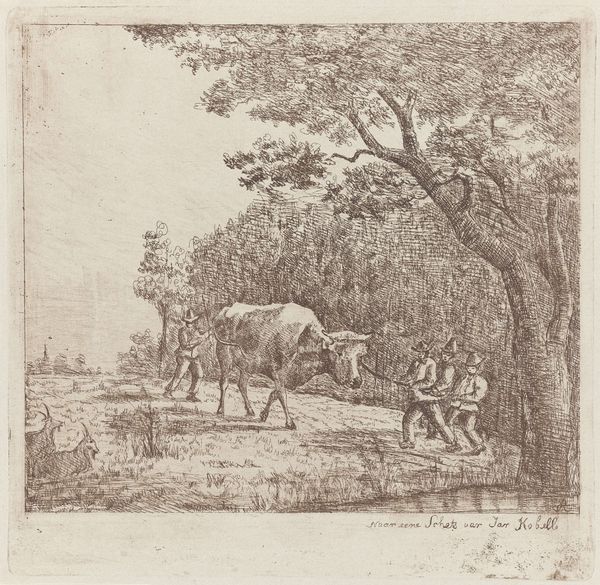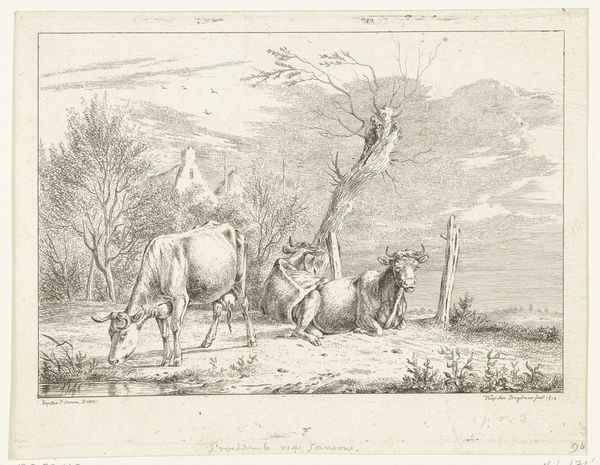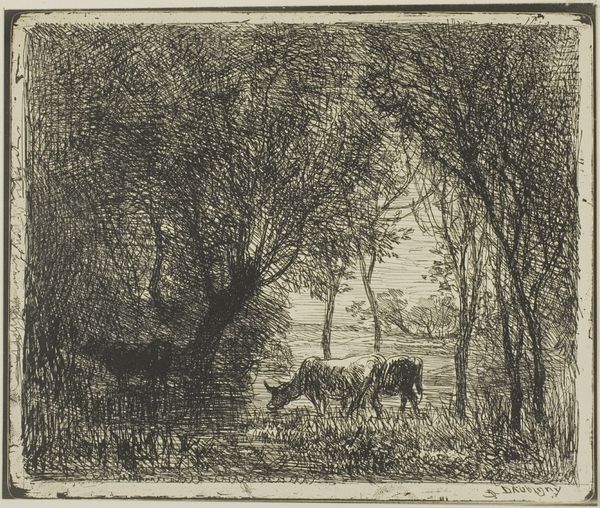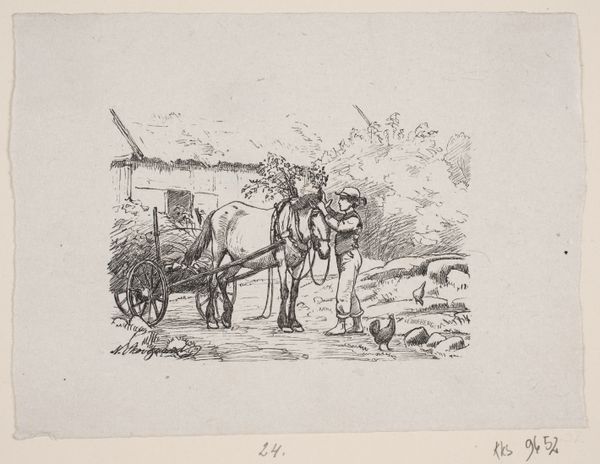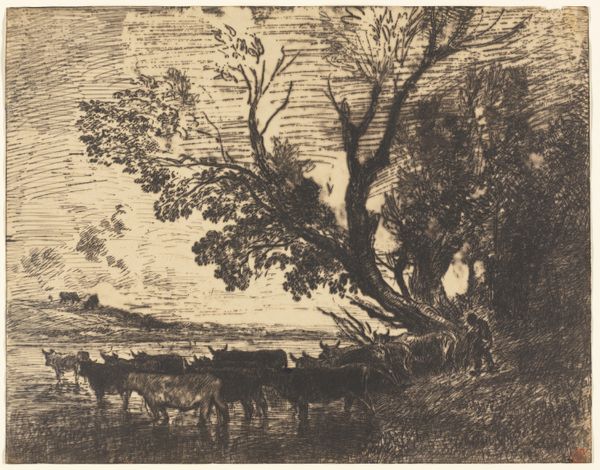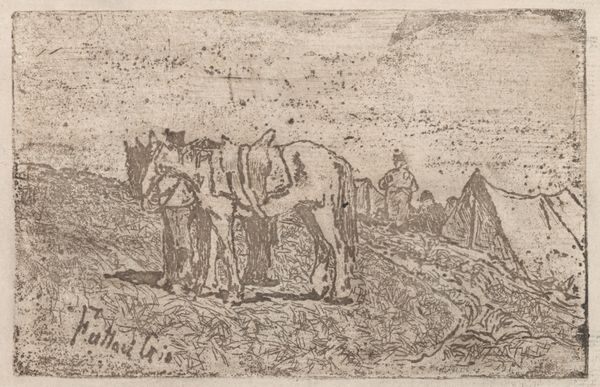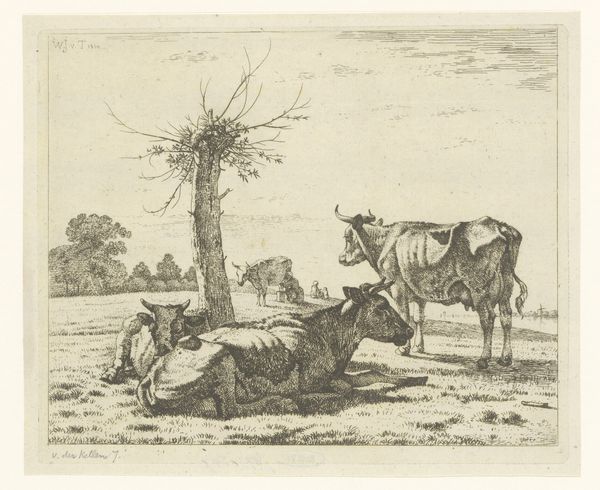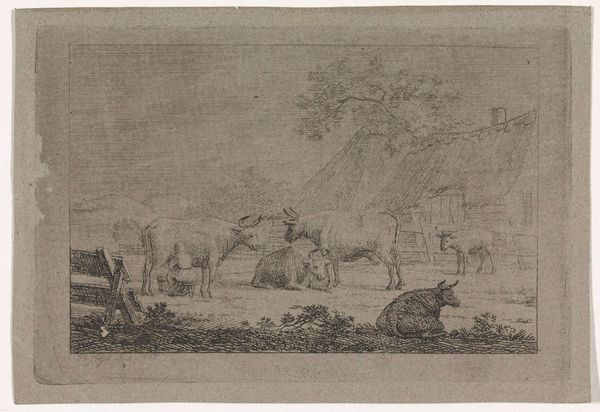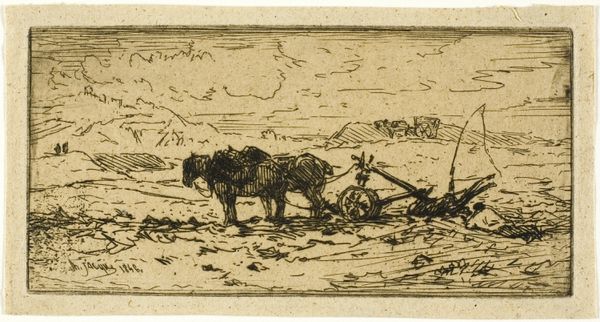
drawing, print, etching, plein-air, paper
#
drawing
# print
#
etching
#
plein-air
#
landscape
#
paper
#
france
#
genre-painting
#
realism
Dimensions: 156 × 190 mm (image); 167 × 207 mm (sheet)
Copyright: Public Domain
Curator: Here we have Charles-François Daubigny’s etching, "The Donkey in the Meadow," created in 1862. It's currently part of the collection at the Art Institute of Chicago. Editor: The delicacy of the etching strikes me immediately—it’s almost dreamlike, capturing a fleeting moment in the countryside. The composition feels very balanced, even with the strong diagonal lines. Curator: Daubigny was a key figure in the development of French Realism and later, Impressionism. His dedication to "plein-air" or open-air painting positioned him as a radical voice in portraying everyday life in the countryside. This print, along with other genre paintings and landscapes, rejects academic idealism and confronts issues of the rural worker, the environment, and societal hierarchies. Editor: Yes, the materiality is central here, too. As an etching, it allowed Daubigny a freedom of line that was innovative at the time. Observe the artist's focus on tone through hatching and cross-hatching that effectively conveys light and shadow—there's a softness to the foliage achieved through purely graphic means, despite the gritty industrial processes. The relationship between the donkey and the landscape becomes quite evocative. Curator: Exactly! The placement of the donkey isn't incidental. Donkeys historically faced relentless work in agricultural societies, enduring hardship with limited resources and the burdens society placed upon them. The work thus is evocative of socio-economic injustices of that era, when modernization was encroaching traditional agrarian practices. Also, you notice some smaller figures on the other side of the donkey? It gives it this voyeuristic view of a pastoral scene. Editor: True, this artwork captures Daubigny’s fascination with capturing everyday life while pushing the boundaries of printmaking techniques of the time, particularly with its range of tonal variations using only etched lines. It really brings us into the scene, a hazy view into nature's embrace. Curator: It also brings forth pressing socio-political issues relating to class and labor of the time. Considering Daubigny’s personal politics allows this relatively plain-sight scene to have multi-faceted and nuanced socio-historical interpretations. Editor: This close inspection underscores how Daubigny effectively merged both observation and technique to evoke such a distinct response in his viewers. Curator: Hopefully that makes everyone think about how different techniques open our eyes to a painting’s context in different ways.
Comments
No comments
Be the first to comment and join the conversation on the ultimate creative platform.
